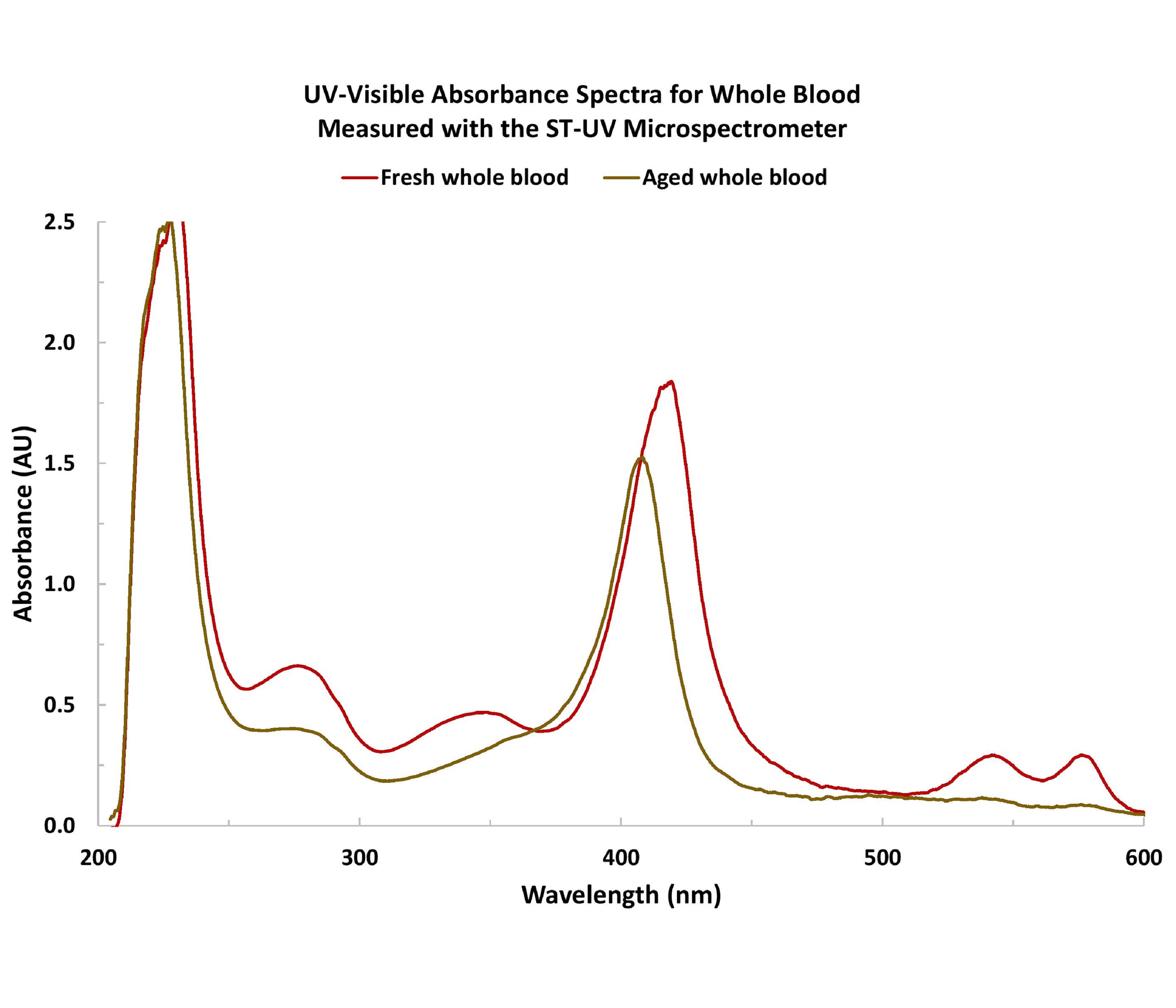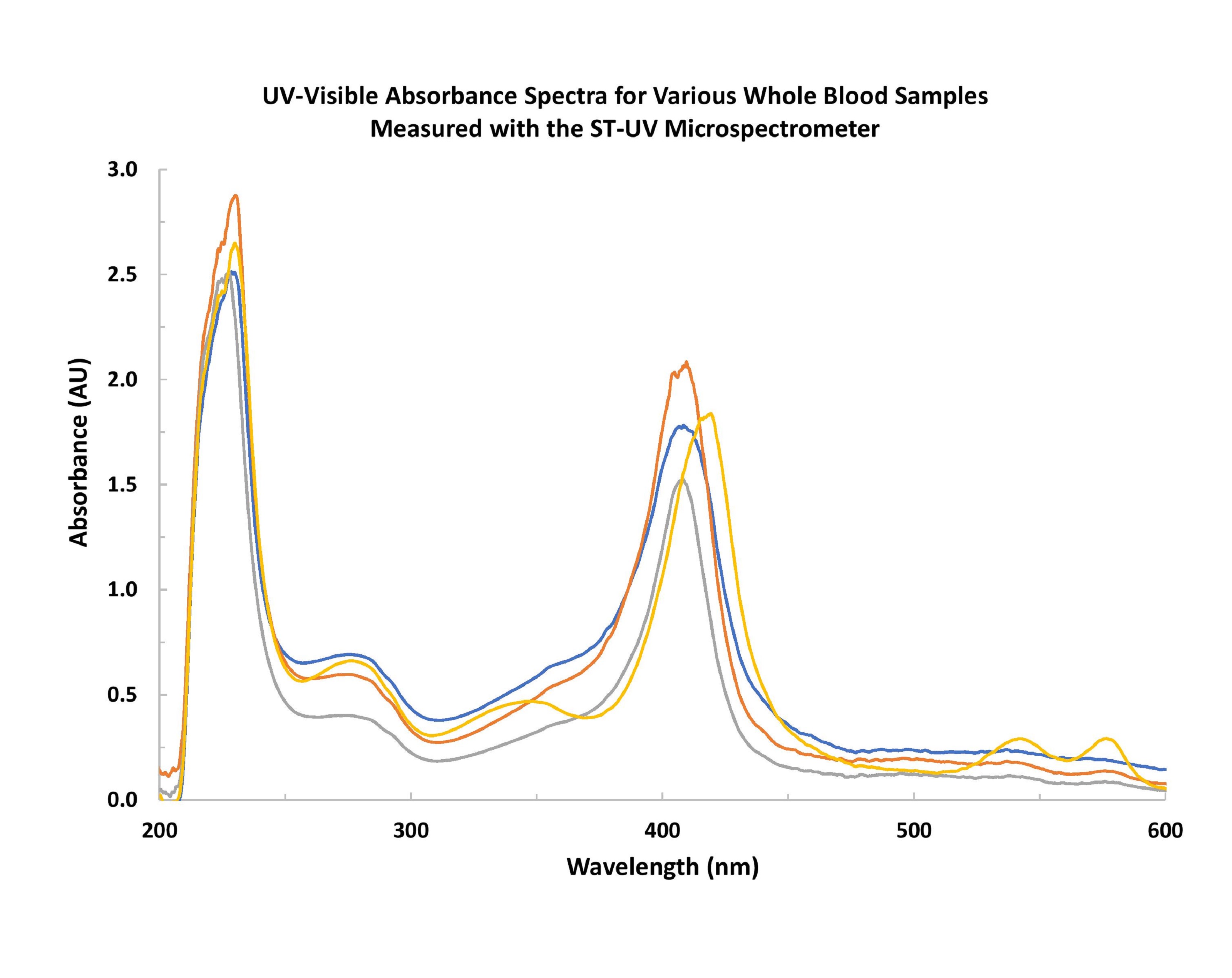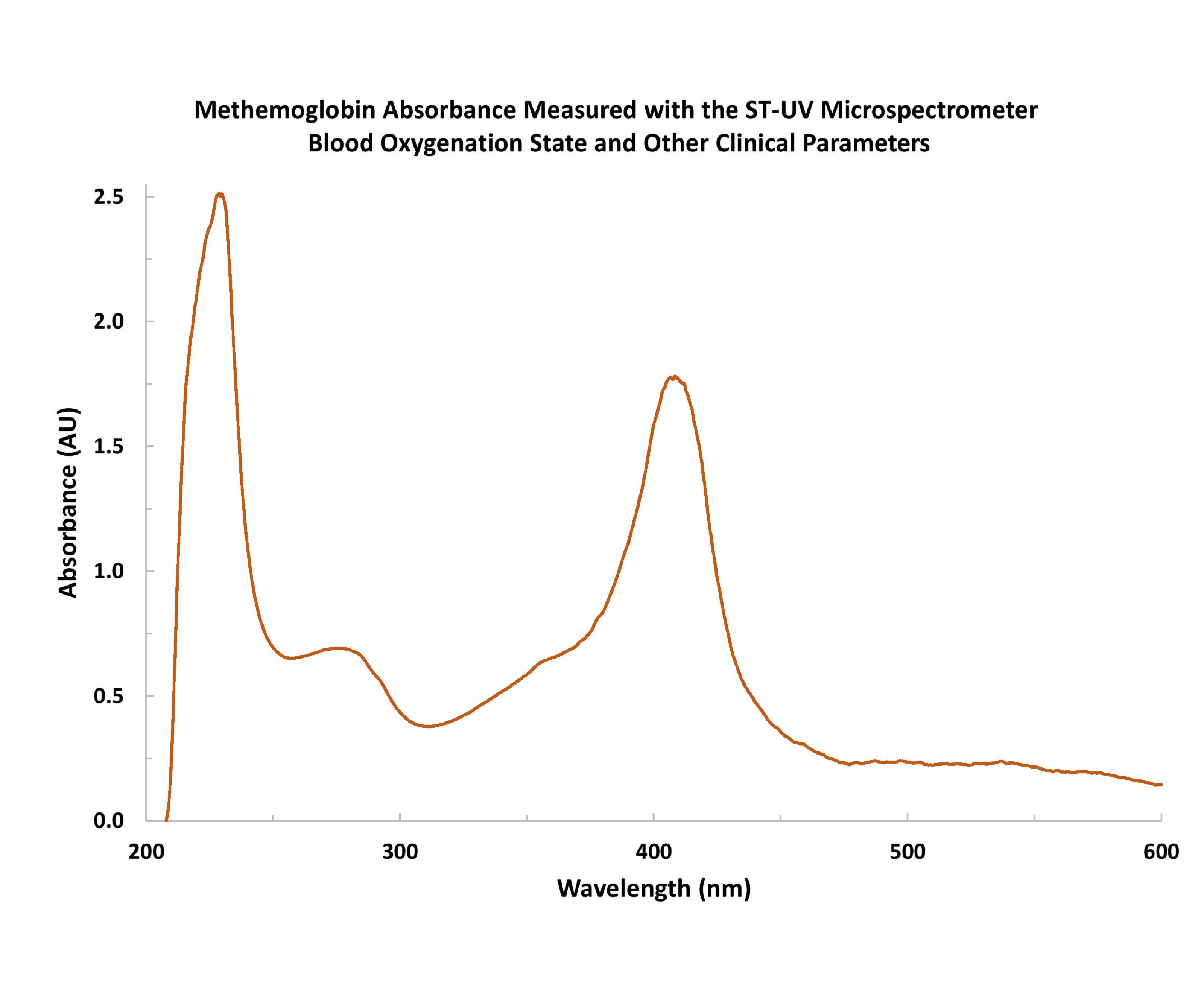Whole Blood Analysis using UV-Vis Spectroscopy
- 產品說明 (點擊展開觀看)
-
原文引用:https://www.oceaninsight.com/blog/whole-blood-analysis/?utm_medium=email&_hsmi=227483939&_hsenc=p2ANqtz-9IfC4tqdFrkKlaE8UEwipFN26ANtGEfuT32NnLMo-RtQDVJIuiAbC-5Ks5WhwFynwPToc1ZV__uqurUHV_TmiaiALFCA&utm_content=227484855&utm_source=hs_email
The small size yet big performance of the Ocean ST microspectrometer makes it an ideal option for applications including medical diagnostics. In this example, we use Ocean ST to measure absorbance of whole blood.
PLEASE REFRESH YOUR BROWSER IF YOU DO NOT SEE ANY IMAGES/SCREENSHOTS/SPECTRA ON THE PAGE.
Point of care (POC) diagnostics have benefited greatly from the marriage of fiber optic spectroscopy and biofluidics, with photonics technologies playing a major role in addressing healthcare challenges from cancer screening to viral detection.
With its small footprint and excellent performance, the Ocean ST microspectrometer is an especially appealing option for POC applications where space is limited or integration into other devices or setups is necessary. Also, its versatility ensures that Ocean ST is a viable option for testing and diagnostics challenges requiring absorbance, fluorescence and other techniques.
Note: Dr. Yvette Mattley and Dr. Joe Bonvallet provided the material for this application note.
Ocean ST-UV for UV-Vis Analysis of Blood Samples
To test the viability of the Ocean ST microspectrometer for absorbance of blood samples, we measured both whole blood and methemoglobin, a form of hemoglobin that has been oxidized. Hemoglobin is the oxygen-transporting component of blood.Equipment Setup
We used an Ocean ST-UV (185-650 nm) with the integration time set for 3.8 ms, scans to average at 100, and boxcar width set to 3. The dark spectrum was stored and nonlinearity correction enabled. The spectrometer and light source were warmed up for 30 minutes prior to measurements, to ensure stability. The same setup was used previously to measure protein and DNA absorbance.Here’s the rest of the setup:
- DH-2000-S-DUV-TTL deep-UV deuterium and tungsten halogen light source. The source provides stable, continuous output from 215-2500 nm.
- SQ1-ALL cuvette holder. This is a general-purpose cuvette holder for 1 cm cuvettes.
- CV-Q-10 1 cm pathlength quartz cuvette. Quartz cuvettes are especially useful for transmitting UV light.
- QP450-1-XSR extreme solarization resistant optical fibers (quantity 2). These are 450 µm SR fibers with stainless steel BX jacketing.
- OceanView spectroscopy software.
Samples and Measurements
Whole blood samples included fresh human blood and aged porcine blood, which has similar characteristics as human blood. UV-Visible absorbance spectra of these samples demonstrate how the Ocean ST-UV can be used to monitor changes in blood related to aging and other criteria (Figure 1).
Figure 1. In these spectra, the fresh blood sample is human and the aged blood sample is porcine.
Also, we collected and measured additional human and animal whole blood samples at different concentration levels. Absorbance spectra for these samples shows the wealth of information available about blood composition in a single UV-Visible absorbance spectrum -- and how each spectrum can vary from sample to sample (Figure 2).
 Figure 2. Whole blood samples have spectral features that can differ according to criteria such as type (human vs. animal) and concentration level.
Figure 2. Whole blood samples have spectral features that can differ according to criteria such as type (human vs. animal) and concentration level.Our methemoglobin sample revealed a strong absorption peak near 405 nm, although the literature also reports an absorption peak for methemoglobin at 630 nm (Figure 3). Methemoglobin is an oxidized, non-functional form of hemoglobin that does not bring oxygen to tissue.
 Figure 3. Methemoglobin is an oxidized form of hemoglobin.
Figure 3. Methemoglobin is an oxidized form of hemoglobin.Because molecular bonding to the heme group in hemoglobin can be detected spectrally between 500-600 nm, we might have considered using an Ocean ST-VIS (350-810 nm) for better response in that region.
About the Ocean ST Microspectrometer
Ocean ST is a powerful microspectrometer that provides excellent spectral response, high-speed spectral acquisition, and impressive signal to noise ratio (SNR) performance for a wide range of applications. It is compatible with Ocean Insight light sources, optical fibers, sampling accessories and OceanView software, allowing users to optimize setups for their applications.Also, each Ocean ST microspectrometer comes with OceanDirect, a powerful, cross-platform Software Developers Kit (SDK) with an Application Programming Interface (API). OceanDirect provides users with the capability to optimize spectrometer performance and access critical data for analysis.
Summary
As the world moves toward personalized healthcare and accessibility, the need for non-invasive and non-destructive technologies including spectrometers to diagnose, treat and analyze conditions will continue to increase.From evaluating colorimetric assays to analyzing blood composition, Ocean Insight spectral sensing tools ensure accuracy and traceability with quantitative measurements.